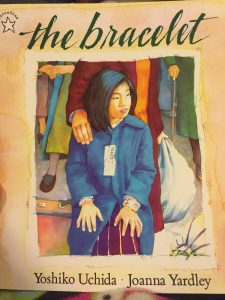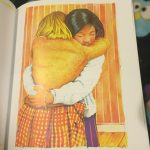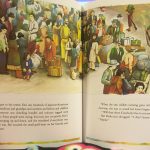Author(s): Yoshiko Uchida
Illustrator/Photographer: Joanna Yardley
Publisher and Year: The Putnam & Grosset Group in 1996
Number of Pages: 29

This book is about the journey of a Japanese-American girl, Emi, who is sent to a prison camp with her mother and older sister. Before she leaves her home, her friend Laurie stops by to give her a bracelet, which Emi swears she will never take off. At the racetrack, or prison camp, Emi loses her bracelet but soon realizes that she does not need her bracelet to remember Laurie, because she will always carry her memories in her heart.
I believe that this story is a great way to teach children about a less talked about tragedy in U.S. history, the imprisonment of Japanese-Americans during WWII. This also gives the audience the chance to not only learn about and discuss this historical event, but also to discuss and learn about racism throughout history. This book clearly represents white people as having power over the Japanese-Americans and how the rest of the country no longer views them as American citizens but people who are a threat to the country. However, I believe that this story is an accurate depiction of the event and the Japanese culture. This is because it does not stereotype the Japanese people, but rather explains the way they were treated, good and bad, by the rest of the U.S. population. The illustrations throughout the story help the reader to feel the emotions of Emi. For example, at the beginning of the story while Emi is still at home, the images are all brightly colored which is a symbol of her freedom and her happy memories with friends and family. But after she leaves home the colors in the images begin to get darker, especially after realizing she lost her bracelet, which symbolizes how she is losing her freedom and beginning to find it difficult to remember happy memories. After she realizes that she does not need her bracelet to remember happy memories, the images begin to brighten up again.
This story has a number of themes and ideological features some themes that one might originally notice are that it is important to stay positive and hopeful even in the toughest of times and material items are not as valuable as friendship and memories. However, I think the deeper meaning of the book is to recognize the injustice that has occurred to many minority groups, specifically the Japanese Americans.


